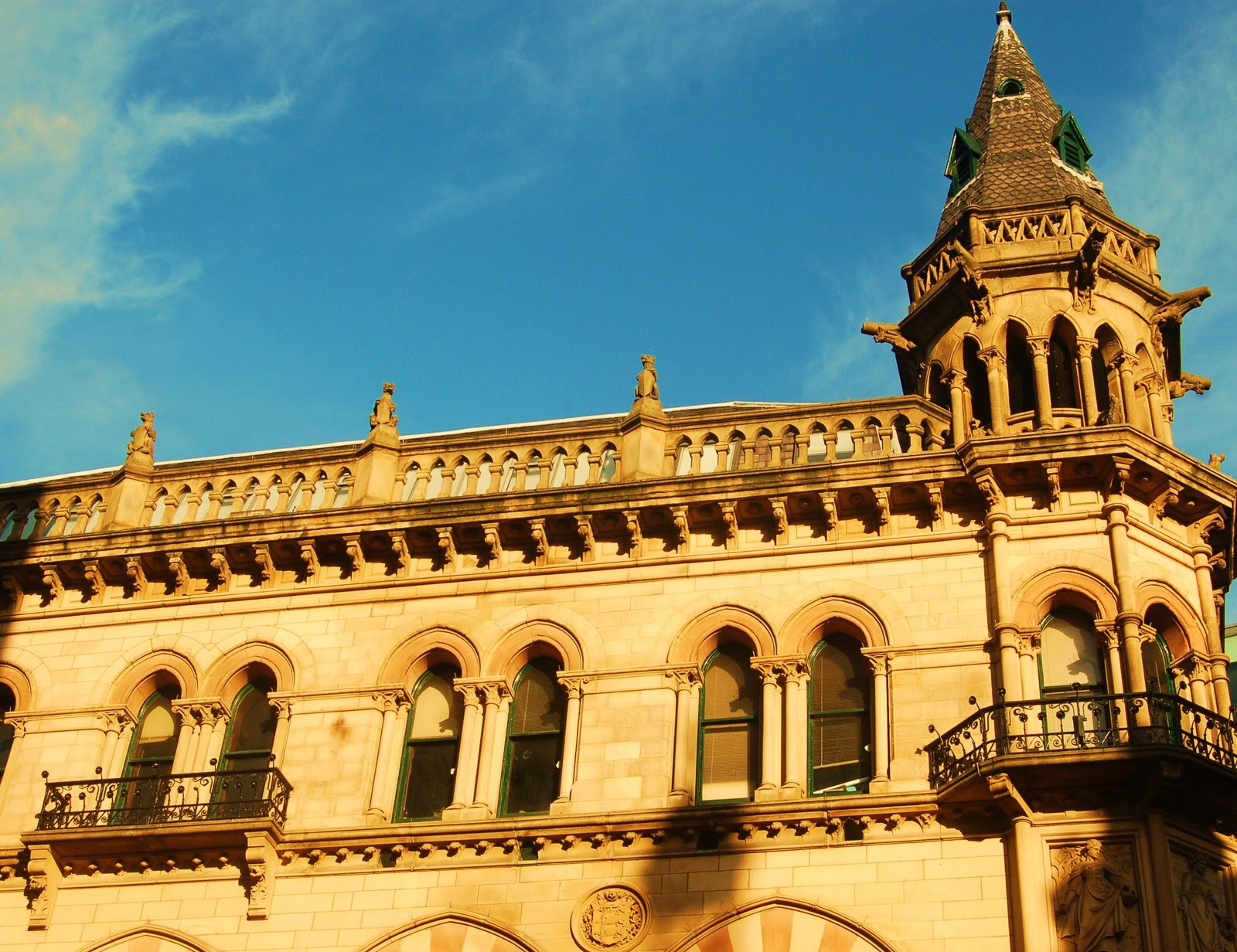As you stand at the top of King Street in Manchester today,you may spot at No 81 an elegant building.
On its ground floor you will see the pink lit windows of a lady’s fashion shop and around the side an elegant cocktail bar where for seven pounds you can relax over a Black Russian,a cherry pop or a Scarlet o’Hara.
150 years ago it was the site of Manchester’s reform club,in its day a hotbed of liberalism.
The club was set up in 1867 to providing a place of resort for Liberal politicians and supporters of the Liberal cause in the Manchester area.
It started life in three rented rooms above the warehouse of John Bright & Brothers in Spring Gardens but at the end of the decade it had outgrown these premises and commissioned local architect Edward Salomons to design the building.
No lesser person than William Gladstone was on hand to open the building in October 1871.
It was a club for Liberal Gentlemen,indeed women were not invited to join for over one hundred years and as this piece from the John Rylands library says,its up and downs reflected those of the Liberal Party in Manchester and beyond.
After World War 2,membership had declined to such an extent that the Club was facing the real prospect of closure.
In 1967 it merged with another Manchester gentleman’s club, the Engineers Club, to form the Manchester Club,
However as membership continued to decline while running costs rose and with insufficient income from its membership the Club became financially unviable, and was finally forced to close its doors in 1987.
As Claire Hartnell writes in Pevsner,Solomon’s work was his best city centre building in his romantic of Venitian gothic
“The two storey hall has a range of large windows,matched in the soaring oriels…beneath is a fanciful portal,richly adorned with carvings including large winged beasts,a motive repeated with variations amongst the lively foliage carvings of the freize”
Writing in 1880 an unknown writer said this about the building:
“at the very top of King Street we are met by what auctioneers would call a splendid ediface,elaborate without an luxorious within….the very porch overhanging like a beetle brow.seems to indicate that momentous subjects on which may hang the fate of nations are daily discussed within its portals”
Salomon himself was a pupil of J. E. Gregan, who designed the Mechanics Institute building on Princess Street.He set up his own practice in Manchester in 1852 and have a left a collection of buildings doted around Manchester including Trinity Court on John Dalton Street and Manchester’s Jewish museum in Cheetham Hill.
He also won the competition for the masonry shell of Manchester Art Treasures Exhibition Building of 1857. He died at Ireton Bank, Platt Lane, Rusholme, Manchester in May 1906, and was cremated at the German Romanesque Manchester Crematorium







